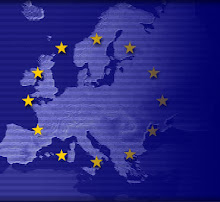Constitutionalism in Eastern Europe
Peter the Great (1682-1725)
- Started off in a bad way, he wasn’t of age when he became ruler, so his sister, Sophia was ruling as his regent he had her banished to a monastery and his mother takes over as his regent and he begins ruling at age 22
- He was very tall and very strong [he could supposedly bend an iron horseshoe with his bare hands
- He also had to deal with internal strife – Strelski – the Moscow Guard – he put down their revolt in 1698 and thereby established himself as the Absolute Monarch
- Peter was very interested in establishing an army – required enlistment
- He spent 25% of the national budget on the army
- His royal army alone had 200,000 men, he also had a special forces unit of foreigners and Cossacks (another 100,000)
- He also established military academies to train officers, some of them specialized in artillery – he was interested in the mechanics of war
- Young male nobles were also required to enlist for 5 years
- Also built up a large navy in the Baltic coast
- Great Northern War (1700-1721)
o Principle allies – Poland, Denmark, and Saxony against Sweden
o Battle of Poltava (1709)– Russia defeats the Swedish forces, it is decisive, but the war dragged on
o Peace treaty at Nystad – Russia gained Latvia and Estonia
It gained ports on the Baltic – “Windows to the West”
- Another project – Westernization, Peter was credited with bringing western aspects to Russia
o It is really hard to classify whether Russia is Europe or Asia
- Peter toured Europe incognito, sometimes working along the way, looking up industries and new techniques, brought in westerners to create industries/factories in Russia
o But that created serfdom of the factories – serfs were used as slaves in factories
o Many were state regulated monopolies - no competition/inferior products, no open market, only serfs worked there, No Educated Labor
- Government becomes more efficient under Peter the Great because he rules by decree
o Theoretically the Tsar owned all land, everyone existed to SERVE THE STATE
o No representative political bodies, no parliament
o All land owners owed life time service to the state, if it was required
o The nobility got to own land and serfs in return – they could essentially do what they pleased “if you were a serf, life sucked”
- “Table of Ranks” – it was possible to rise in the bureaucracy through ability
o It set educational standards for the positions, most civil service agents came from the nobility
- He had an extensive Secret Police that were absolutely ruthless and crushed all opposition to the state and taxation
o He had a head tax on every male [annual]
o Also taxed trade/sales/rents/beards
- Used a lot of money for St. Petersburg – wanted create a city similar to Amsterdam although he did create his own version of Versailles
o It was the largest northern City at the time of his death
o He made the serfs work on it and made the nobility build houses there according to his plans
o He also forced merchants and artisan to live there in their own sections
- Political Control – he turned the Orthodox Church into a political structure (1700)
- Peter modernizes Russia, but still the underlying harsh conditions
o He starts to explain his reasoning, but still ruled by decree
Sunday, 15 November 2009
Subscribe to:
Post Comments (Atom)

No comments:
Post a Comment